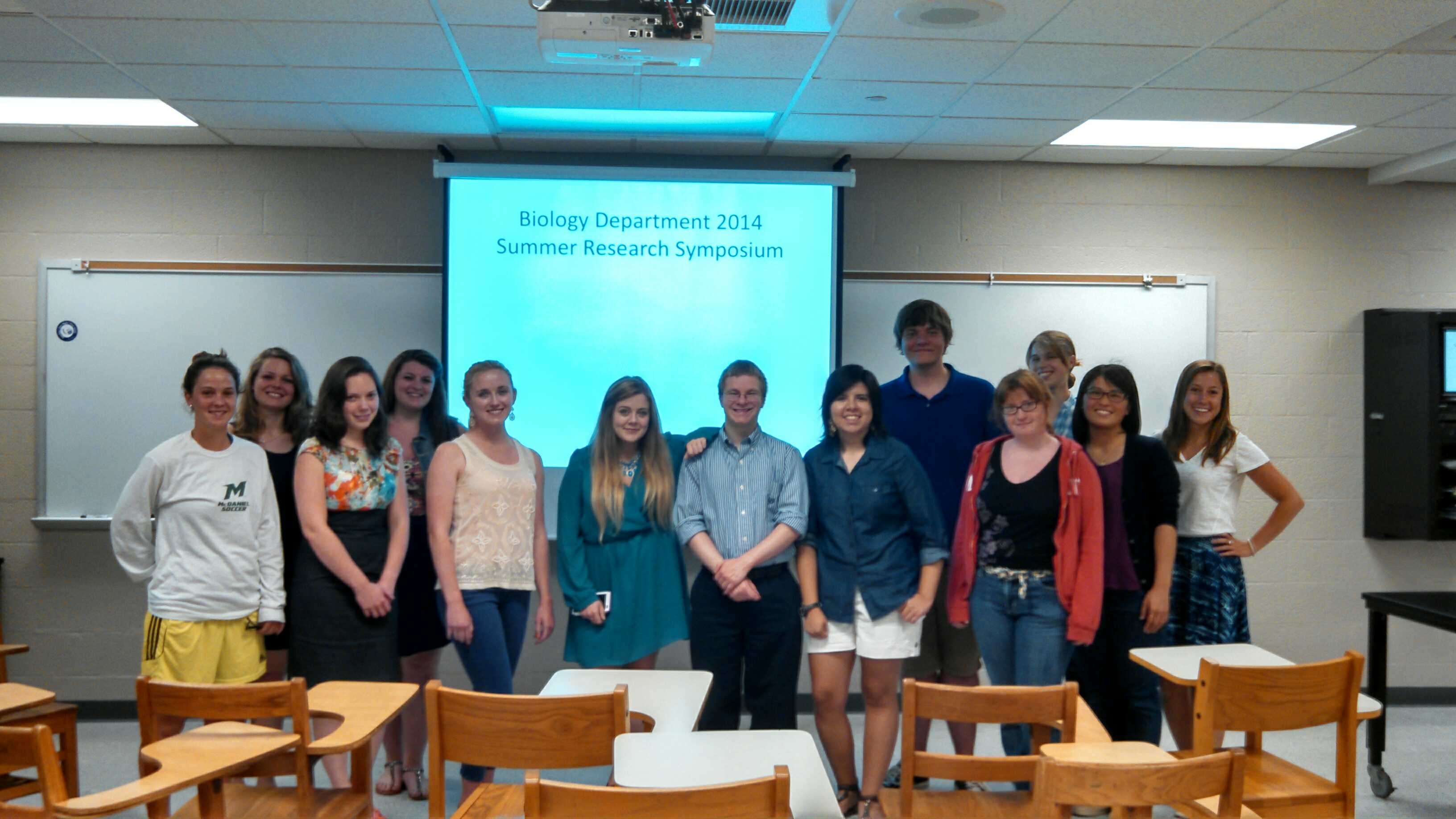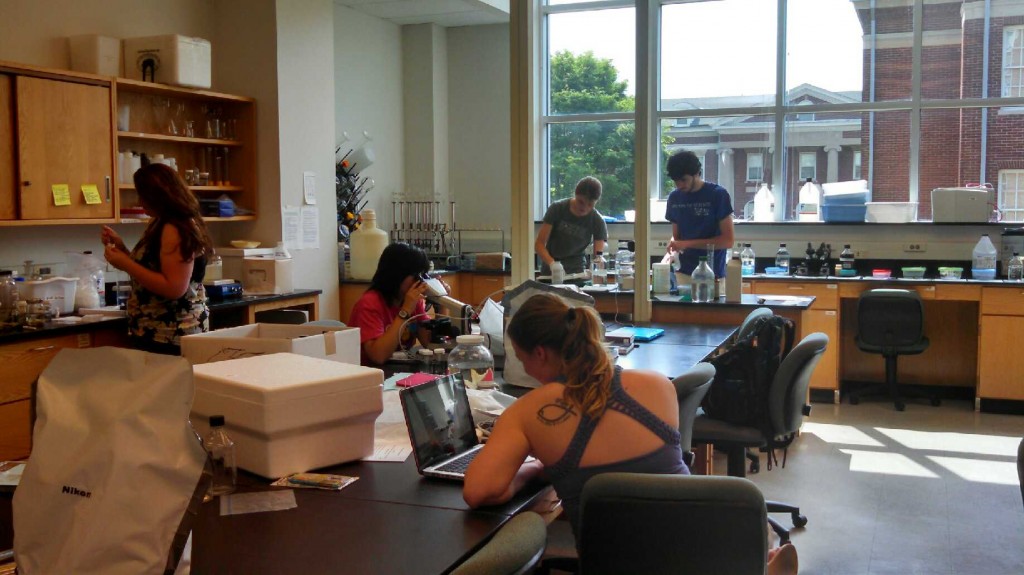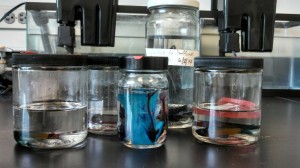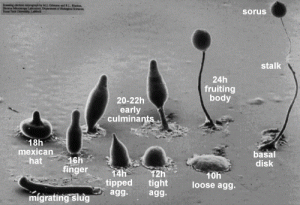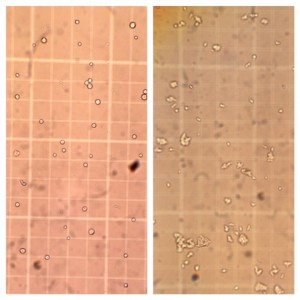The past several weeks of summer research have been an incredible experience for me with the Bio. Department of McDaniel. I feel like my words are not adequate to express my thanks and gratitude for having been welcomed into this phenomenal group. So, in lieu of my babbling, I’m going to leave you all with a rap that I wrote for Dr. Staab in honor of one of the key inspirational figures in her life: Jay – Z. This rap, entitled “Lab Girls,” is a parody of Jay-Z’s song “Roc Boys (And the Winner Is…).” If you would like, look up the lyrics on your own – I’m not going to post them here. [Note: any drink mentioned below is referring to sparkling cider!] I hope that you get as much of a kick out of this as I did!
Lab Girls (And the Winner is…)
First of all I wanna thank Dr. Staab
She’s the teacher, the most important job.
Thanks to science, and to all the noble fish
McDaniel College for holding all the cash
The Bio Department who taught us life in the lab
The first pub worker with whom we had a clash
And the awesome girls in the lab today.
Oh what a feeling I’m feeling life
Thanks for the people who gave us aim
For the research projects that are getting us in the game.
Faulty data will stop our buffoonery.
Oh, and thanks for rapping all the fishes’ eulogies
Thanks to all those who became our friends
For sure, it’s paying off dividends
Yeah, thanks to all the digressors
[– SQUIRREL!! –]
But most importantly, thanks to you: our professor.
The Lab Girls in the building tonight
Oh what a feeling, I’m feeling life
You don’t even gotta bring your data out
We the lab girls of the year, drinks is on the house
Look at how we’re geeking, we gettin’ this down.
You don’t even gotta bring your data out
We the lab girls of the year, drinks is on the house.
Put yo’ hands up baby, we just hit a score
Pick any fish in the sea, pick a shore
Take what the scientists figured, then figure more
Cause the primary lit. ain’t yet gotten to the core.
Pick a time, let’s pick apart some data sets
Pick a weekend for placing your bets
’Cause we’ve got some staining coming up
We don’t know what these slides are gonna show
So grab a microscope, let’s check the results
Scope it out and take some pics
They’re beautiful baby, these gems are sick.
Get a label and a box,
Posters and powerpoints to make all day
And then papers to write… oh yay
Don’t forget those lab notebooks – gotta record the process, see
’Cause we’re on our way to SICB, dig me?
The Lab Girls in the building tonight
Oh what a feeling, I’m feeling life
You don’t even gotta bring your data out
We the lab girls of the year, drinks is on the house
Look at how we’re geeking, we’re gettin’ this down.
You don’t even gotta bring your data out
We the lab girls of the year, drinks is on the house.
HBQ, Verhoff-Van Gieson’s
We got the methods and we got the reasons
Chemical analysis and histological stains
Periodic acid-Schiff and Dane’s.
Now this kinda talk is reserved only for bosses
So double-check your stats, we ain’t taking no losses.
Slide boxes, graphs, and endless reading
Let’s have a toast because we are succeeding.
So first things first,
Get out those beakers,
On three, cheers, and shout “Eureka!”
The Lab Girls in the building tonight
Oh what a feeling, I’m feeling life
You don’t even gotta bring your data out
We the lab girls of the year, drinks is on the house
Look at how we’re geeking, we’re gettin’ this down.
You don’t even gotta bring your data out
We the lab girls of the year, drinks is on the house.
Sweet, now, let’s ride it out
We’ll be back in the fall without a doubt.
This is superhero music right here, baby
American Gangsta, Jay-Z, the Real Slim Shady
Taking flight
Here we go
Reaching new heights
Ow ow, baby!



